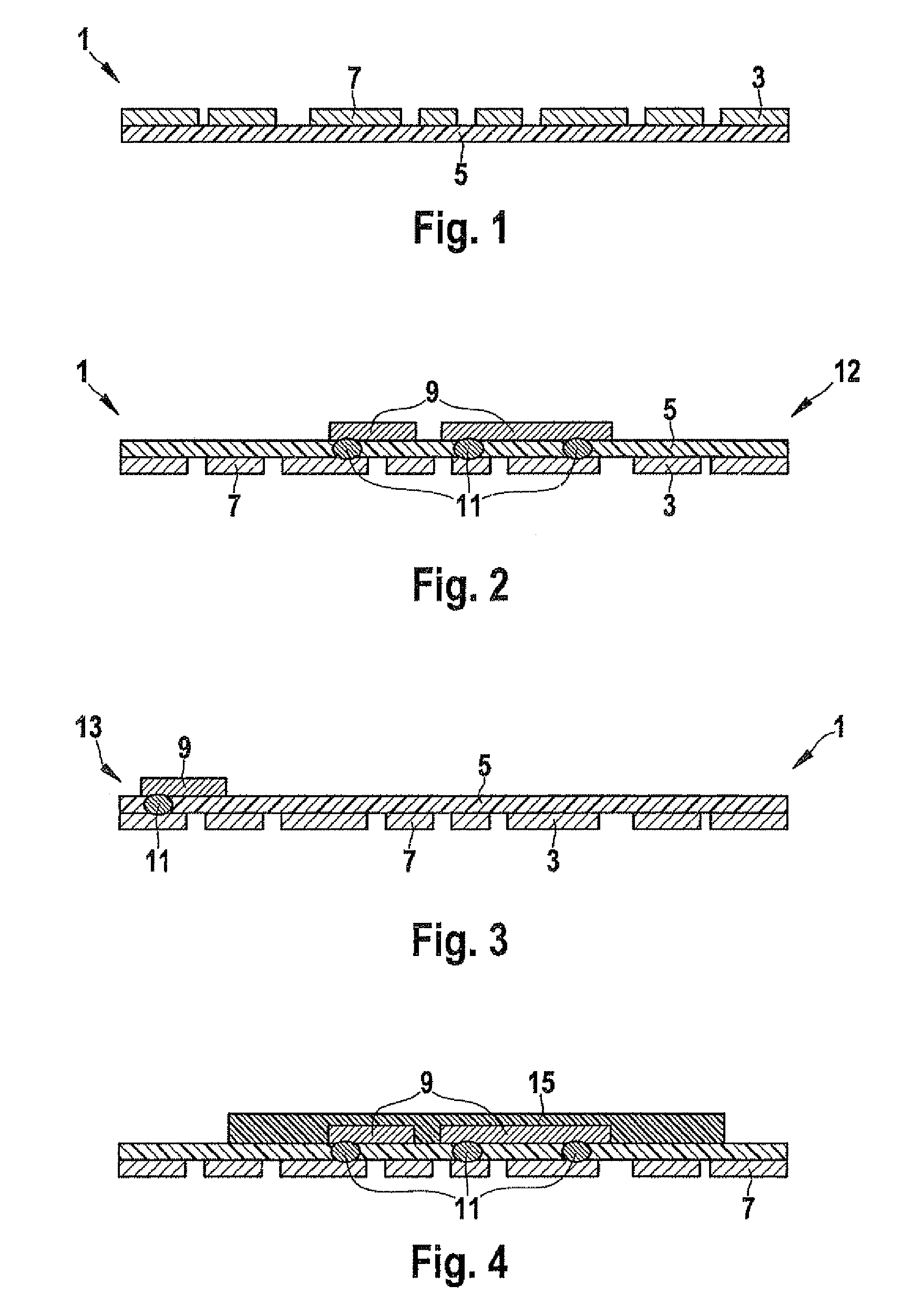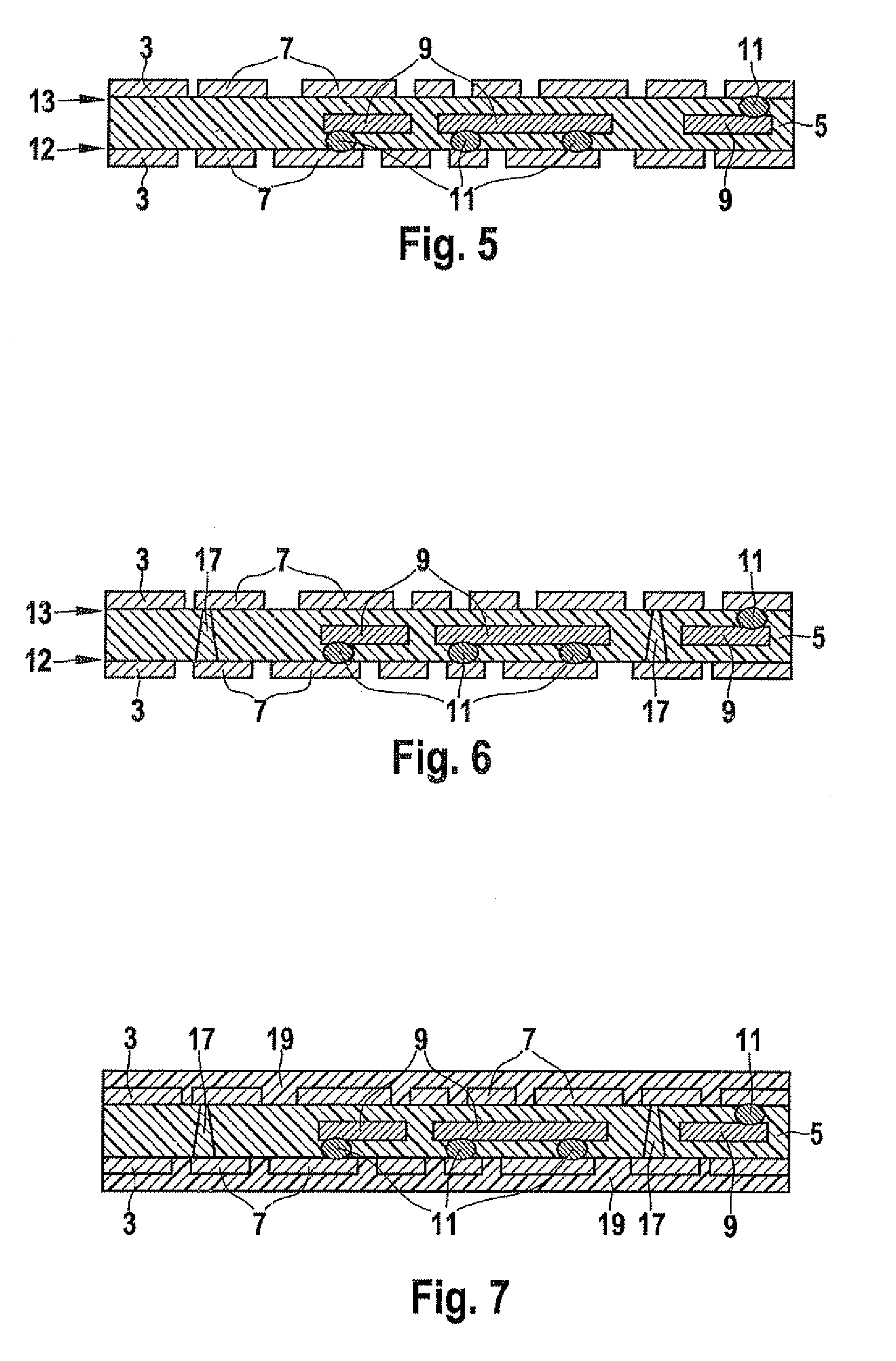Method for manufacturing an electronic assembly
a manufacturing method and electronic assembly technology, applied in the direction of printed circuit manufacturing, printed circuit aspects, printed electric component incorporation, etc., can solve the problems of difficult to precisely position electronic components and comparatively large thickness, and achieve cost-effective wiring and encapsulation. , the effect of cost-effectiv
- Summary
- Abstract
- Description
- Claims
- Application Information
AI Technical Summary
Benefits of technology
Problems solved by technology
Method used
Image
Examples
Embodiment Construction
[0036]FIGS. 1 through 7 show individual method steps for manufacturing an electronic component developed in accordance with the exemplary embodiments and / or exemplary methods of the present invention.
[0037]In a first step, which is shown in FIG. 1, an electrically conductive foil 1 is patterned so as to develop a circuit trace structure. The patterning is performed only on an electrically conductive layer 3 of electrically conductive foil 1. In the specific embodiment shown here, electrically conductive layer 3 is applied on an electrically non-conductive layer 5. Electrically non-conductive layer 5 acts as a carrier layer and is not patterned. Electrically non-conductive layer 5 is a plastic layer for example. Particularly metals, for example copper or silver, are suitable as electrically conductive layer 3. Furthermore, gold, palladium or laminates, for example NiPdAu, are suitable as well. Electrically non-conductive layer 5 may be applied on electrically conductive layer 3 by la...
PUM
| Property | Measurement | Unit |
|---|---|---|
| electrically conductive | aaaaa | aaaaa |
| electrically | aaaaa | aaaaa |
| conductive | aaaaa | aaaaa |
Abstract
Description
Claims
Application Information
 Login to View More
Login to View More - R&D
- Intellectual Property
- Life Sciences
- Materials
- Tech Scout
- Unparalleled Data Quality
- Higher Quality Content
- 60% Fewer Hallucinations
Browse by: Latest US Patents, China's latest patents, Technical Efficacy Thesaurus, Application Domain, Technology Topic, Popular Technical Reports.
© 2025 PatSnap. All rights reserved.Legal|Privacy policy|Modern Slavery Act Transparency Statement|Sitemap|About US| Contact US: help@patsnap.com



